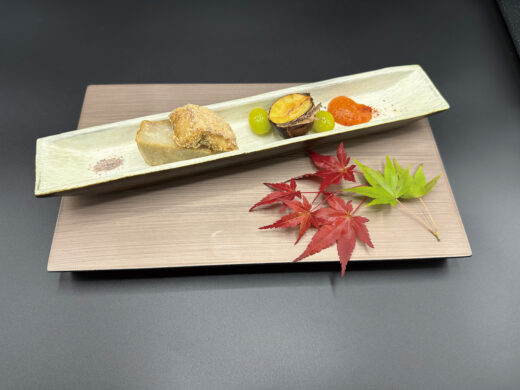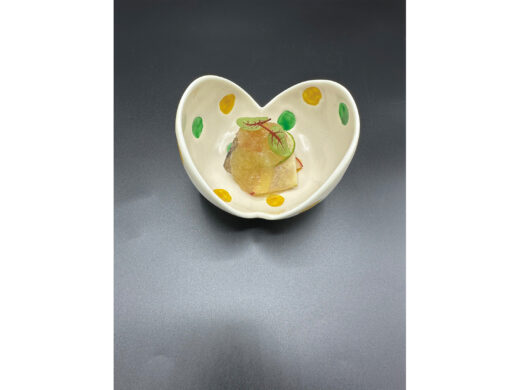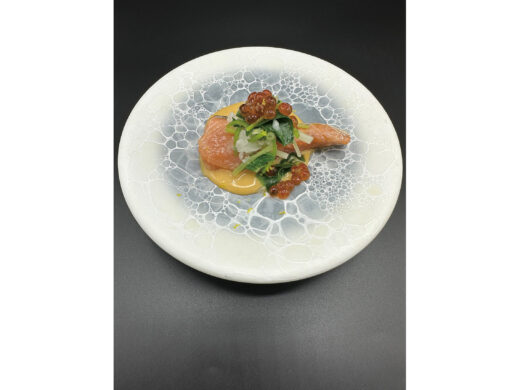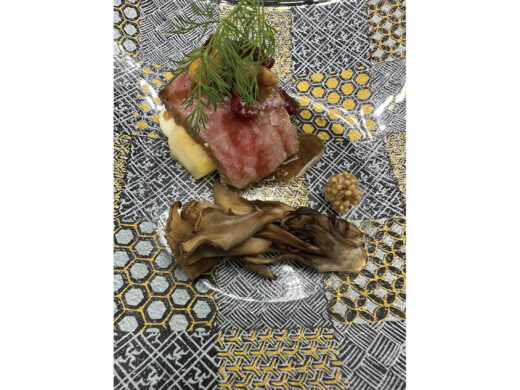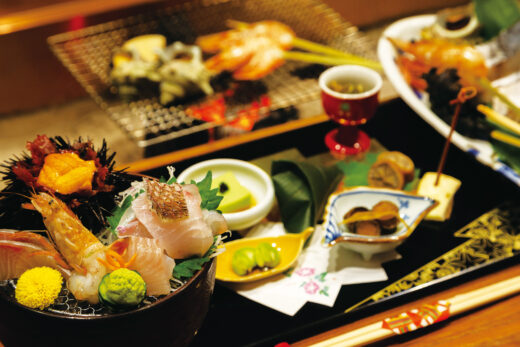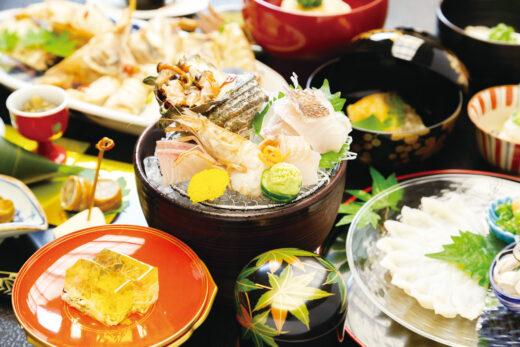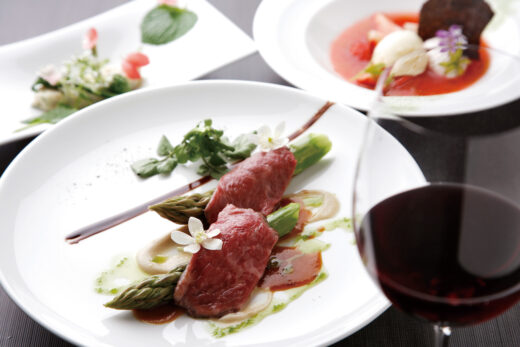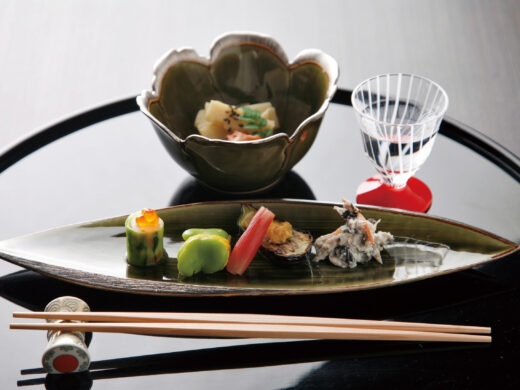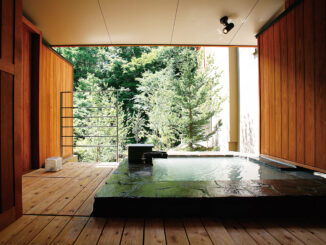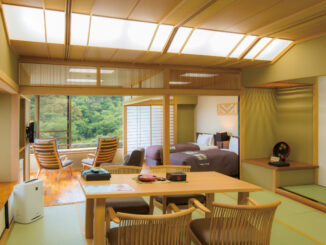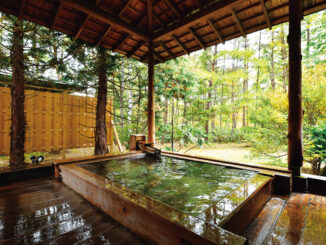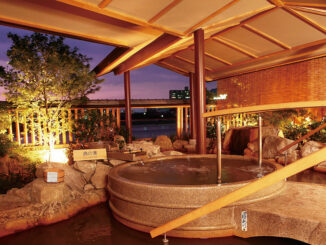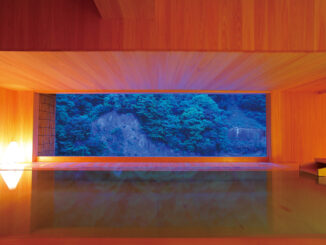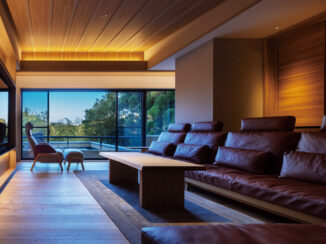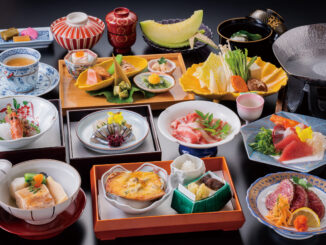Featured
INDEX
- Things you should know before enjoying the inn's gourmet cuisine
- A five-star inn's kaiseki cuisine that adds an extra level of satisfaction to a truly Japanese-style relaxing experience
- Kaiseki cuisine with a touch of Western flair and kaiseki cuisine tailored to the tastes of our customers
- An inn renowned for its gourmet kaiseki cuisine
Things you should know before enjoying the inn's gourmet cuisine
Kaiseki cuisine and kaiseki cuisine. They are homonyms and often confused, but strictly speaking there are three major differences between them. First, the purpose of the cuisine is different. Kaiseki cuisine was originally defined as "enjoying tea", while kaiseki cuisine is "enjoying alcohol". The second difference is the place where the cuisine is eaten. Kaiseki cuisine is served in a teahouse, while kaiseki cuisine is served in restaurants or banquets. The order of the cuisine is also different; in kaiseki cuisine, rice, soup, and mukouzuke are served first, while in kaiseki cuisine, rice and soup are served last. Kappo cuisine follows the same flow as kaiseki cuisine, but it is different from kaiseki cuisine in that you order directly at the counter, and the chef prepares each dish on the spot and serves them to you one by one, so it is a style of cuisine that is also different from kaiseki cuisine.
Kaiseki cuisine is said to have originated in the Azuchi-Momoyama period, when Zen Buddhist monks would hold warm stones in their bosoms to ease their hunger pangs during their training. It is said that Sen no Rikyu brought kaiseki cuisine into the world of tea ceremony. It was believed that kaiseki cuisine was served before tea, as strong tea tastes better if eaten lightly first. Therefore, the cuisine served for tea ceremonies is called "cha-kaiseki".
In modern times, kaiseki cuisine has changed and is now more of a course meal using seasonal ingredients. The way it is served also changes, with cold dishes served as they are and hot dishes served hot, with each dish brought out at the perfect time to please both the eye and the tongue. It seems to be changing into a style that aims for the food to be beautiful and delicious to eat. Most of the food served at five-star inns is kaiseki cuisine, but if you look carefully for the difference between "kaiseki" and "kaiseki," you can find inns that specialize in authentic kaiseki cuisine. Many of these inns aim to provide in-room dining, which is a part of Japanese inn culture, or to allow guests to enjoy kaiseki cuisine in a restaurant with a Japanese atmosphere.
A five-star inn's kaiseki cuisine that adds an extra level of satisfaction to a truly Japanese-style relaxing experience
Here are five-star inns where you can enjoy kaiseki cuisine in a purely Japanese hospitality space. Saryo Souen in Akiu Onsen Onsen, Miyagi Prefecture, is known for its beautiful 26,000m2 Japanese garden and traditional sukiya-style architecture. You can savor kaiseki cuisine prepared with care in a tranquil restaurant. In Hakone, Kanagawa Prefecture, there are Gora Kadan and Hakone Ginyu . At Gora Kadan, you can enjoy authentic flavors at the Kyukan'innomiya Villa, a Western-style building that still evokes the image of the Imperial family, and at Hakone Ginyu, you can dine in your room. There is another inn in Kanagawa Prefecture, Fukiya in Yugawara Onsen . The website introduces monthly menus that reflect the 24 solar terms. At Meiseki Kagetsu in Isawa Isawa Onsen, you can enjoy hospitality that is similar to tea ceremony kaiseki. You can enjoy authentic kaiseki cuisine with attention paid to even the smallest details, such as the tableware, in an elegant and relaxing atmosphere.
Takinoya , a long-established inn founded over 100 years ago in Noboribetsu Onsen , Hokkaido, has its roots in a traditional Japanese restaurant. Its kaiseki cuisine, which is made by concentrating the seafood and mountain produce that the Noboribetsu climate has nurtured, is particularly delicious, and the dishes depict the four seasons of Noboribetsu. In 2018, it was also featured in JR's "TRAIN SUITE Shiki-shima".
With the coming of the seasons and seasonal words from the saijiki, the dining experience is designed to express the "first," "first in season," and "last in season." This is the kind of gourmet experience you can enjoy at "Koyoi Tenku ni Shogetsu " in Gero Onsen, Gifu Gero Onsen . Each room is a private room with a different atmosphere, and you can enjoy cooking using carefully selected ingredients such as Hida beef.
Another restaurant that provides gourmet dining experiences that are tailored to the individual customer is Tsutsujitei in Kusatsu Onsen . Its kaiseki cuisine, created by incorporating various Western styles while still respecting the fundamentals of Japanese cuisine, has many loyal fans, some of whom visit four times a month.
Based on the authentic Kappo cuisine and Kyoto Kaiseki cuisine handed down at the restaurant Yagyu in Shiba Shirokane, Tokyo, Yagyu no Sho in Shuzenji Onsen , Shizuoka Prefecture, continues to pursue the pinnacle of Japanese cuisine. And so does the famous inn Asaba . At both, you can relax in a room equipped with a hot spring bath and enjoy the exquisite Kaiseki cuisine to your heart's content. The menu, which focuses on ingredients from Izu, such as Suruga Bay, Kano River, and the foot of Mount Amagi, is so magnificent it is reminiscent of the art of taste. At Noto no Sho in Wajima Nebuta Onsen, Ishikawa Wajima Nebuta Onsen" Notonosho ". We can only hope for a speedy recovery.
Kaiseki cuisine with a touch of Western flair and kaiseki cuisine tailored to the tastes of our customers
An example of Takinoya's kaiseki cuisine, starting with a "welcome home" fruit liquor from the hostess, and enriched with local and seasonal flavors
The Lake View Toya Nonokaze Resort in Toyako Onsen, Hokkaido, is a place where you can see a fusion of French flamboyance and the beauty of kaiseki cuisine, and this unprecedented food hospitality is attracting attention. At the prestigious Kinugawa Kanaya Hotel , they offer Kanaya-style kaiseki cuisine - Wakeiyosan -, a combination of tradition and innovation that combines kaiseki cuisine with a Western taste. At Dining JON KANAYA, you can enjoy this gourmet cuisine, full of originality and rooted in the Western restaurant John Kanaya Azabu, decorated with sculpted glass by Gabriel Loire, a French artist beloved by John Kanaya Senji.
Kinzan is a high-end inn in Arima Onsen . It is the only one-star Michelin certified in Hyogo Prefecture. Guests can enjoy Kyoto-style kaiseki cuisine, which is made with carefully selected ingredients and prepared in reverse order to their mealtime, in guest rooms or private rooms with thorough infection control measures. At Nikko Senhime Monogatari in Nikko Onsen Onsen, Tochigi Prefecture, located in the special scenic spot of Nisha Ichiji, a World Heritage Site, the restaurant offers popular upgraded kaiseki cuisine, based on locally produced and locally consumed kaiseki cuisine such as Nikko yuba stewed in Kyoto style, with the addition of A5 rank Tochigi wagyu beef shabu-shabu. Another popular inn is Furuya Ryokan in Atami Onsen , Shizuoka Prefecture, close to the capital, which serves Kyoto-style kaiseki cuisine but is also popular for its original kaiseki cuisine.
An inn renowned for its gourmet kaiseki cuisine
For example, at Juhachiro in Nagaragawa Onsen,Juhachiro , you can experience cuisine made with the pride and skill of a master chef, who has numerous qualifications, including being an international herbal medicine nutritionist. Meanwhile, at Enraku in Unazuki Onsen, Toyama Prefecture, the chef is known for his "Elegant Meal," which features gourmet food made with knife skills inherited from the founder and served on tableware chosen by the owner himself. Another gourmet Ibusuki Shusuien is Ibusuki Shusuien in Ibusuki Onsen , Kagoshima Prefecture, known as the "Garden of Taste, Flavor, and Fragrance," and is impressing gourmets with its gourmet cuisine. The specialty dish, "Softly Boiled Satsuma Kurobuta Pork," is truly exquisite.


